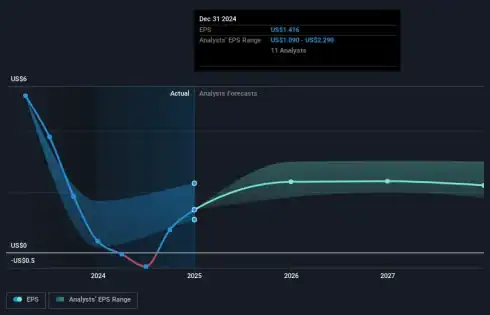
Pfizer recently announced positive topline results from its Phase 3 BASIS study for HYMPAVZI™ and declared a third-quarter 2025 dividend of $0.43 per share. Alongside these developments, the company reported various clinical trial updates and strategic agreements. Over the last month, Pfizer’s share price rose by 4%, slightly outperforming the broader market’s 1.7% increase in the past week. These advances, along with sustained dividend distribution, likely reinforced investor confidence and offered added weight to the positive market trends, reflecting the company’s ongoing drive in innovation and shareholder value.
The recent positive outcomes from Pfizer’s Phase 3 BASIS study for HYMPAVZI™ and the declaration of a third-quarter 2025 dividend could strengthen the company’s market position and bolster investor confidence. These developments have led to a short-term share price increase of 4%. This is a favorable outcome considering the company’s broader challenges in maintaining revenue growth amidst increased competition and changing drug utilization patterns. Over the past five years, however, Pfizer’s total shareholder return, including share price and dividends, was a 4.54% decline, contrasting with its recent gains.
In the past year, Pfizer’s share price performance has aligned with the US Pharmaceuticals industry’s 10.7% decrease, indicating broader industry pressures. Despite the near-term boost, there remains uncertainty regarding the long-term revenue impact, especially with products like Vyndaqel and Paxlovid facing headwinds. The earnings forecasts similarly reflect cautious optimism, with analysts predicting growth but with slower annual profit growth of 7.2% compared to the broader US market’s 14.7%.
The current share price of $24.41 remains close to the bearish analyst price target of $24.57, suggesting a consensus that the company is fairly valued relative to anticipated performance. With future catalysts and potential macroeconomic challenges, the company’s ability to exceed these projections and impact its long-term valuation trajectory will depend heavily on its strategic execution and market dynamics.
